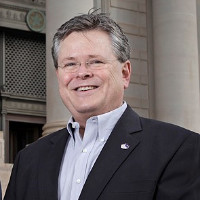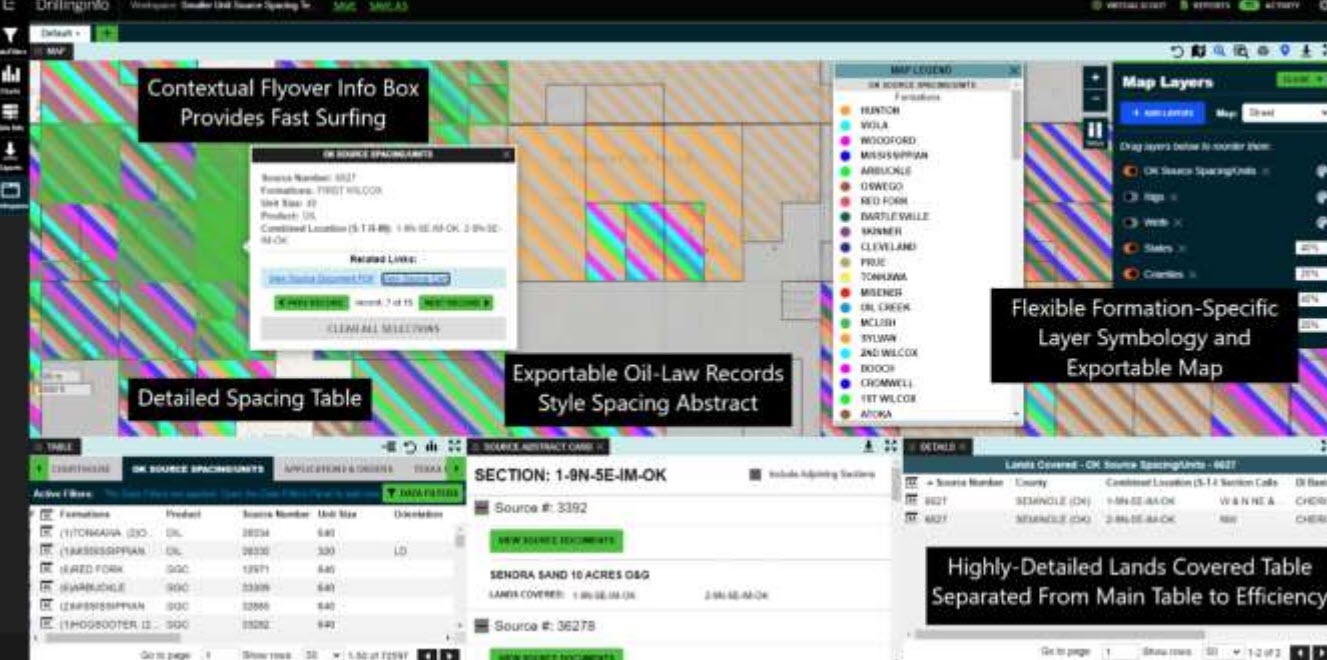Don't make the million dollar decisions without data and Enverus
Oil and gas in Oklahoma have had a rich history and is an important piece of the energy picture for the United States. It is also unique in some of the requirements for oil production from the Oklahoma Corporation Commission (OCC). Enverus has released its new add on solution to help cover these unique requirements, that at times hard to implement.
We were fortunate to visit with Brad McPherson, Director, about the new Oklahoma Source Spacing product, and what it means to the oil and gas market. Brad has been working on this project for decades and is an invaluable resource for this Enverus solution. With more than 30 years invested in working directly with Oklahoma state-level regulatory data, Brad has been instrumental in the ongoing development of OLR’s flagship data product, the Oklahoma “Source” Spacing database. (Brad, did not mean to imply you are old, just season.)
Brad, our time on the interview was greatly appreciated! Thank you for stopping by and helping clear up the Oklahoma Source Spacing. I am looking forward to the exciting updates that you have in the works.
About Enverus

Brad McPherson
Brad has served as Enverus’ Oklahoma Director since 2017. Prior to joining Enverus, Brad was President and CEO of Oil-Law Records Corp. (OLR), of Oklahoma City for two decades before OLR was acquired by Enverus (then Drillinginfo) in 2017. With more than 30 years invested in working directly with Oklahoma state-level regulatory data, Brad has been instrumental in the ongoing development of OLR’s flagship data product, the Oklahoma “Source” Spacing database. The Source Spacing database creates a bridge between land, legal, geological and regulatory data
During his career, Brad has worked directly with hundreds of energy firms, financial entities as well as state and federal government agencies to create and accelerate access to key regulatory data that the oil and gas industry has come to rely on to make critical decisions. Many industry-standard methods and functionalities today are a direct result of Brad’s vision and trailblazing efforts.
Brad received his undergraduate education from the University of Oklahoma and received his legal education at the Oklahoma City University School of Law.

What are Spacing Orders?
In Oklahoma, Spacing Orders are geological and land areas that define the 3-dimensional box that a well will produce from its entire life. Spacing Orders are created in a building block pattern and are connected to each other in patterns that follow the geological development over time. A “Source” is a historical trail that tracks this development of how a formation is initially Spaced (via OCC Spacing Orders) and then connected with other Spacing Orders of the same formation over time and geographically. Note: Spacing Orders originate at the OCC and are not the same as Enverus Well Spacing.
What are some key differences between Spacing Orders and Regular Oklahoma Apps & Orders?
The Source Spacing system deals with multiple Spacing Orders (connecting them together) while including other types of related information in the same dataset like Increased Density, Modification to Allowable, and Rule Making Orders. It also tabulates all histories into a single, fully interpreted data item and defines Spacing Orders which might conflict with other Spacing Orders. Examples could be:
• Where a Spacing Orders was created vs. Extended as required by Statute
• Where an existing Spacing Order was created on top of another in the same formation
• Where a Spacing Order was created of a different size or configuration without modifying the existing
previous Order
This contrasts with Regular Apps & Orders which deal with just one App or Order at a time. To get a full picture, numerous Apps and Orders must be digested and pieced together. Also, regular Apps & Orders do not provide any indication of conflicting OCC Orders.
Learn more at www.enverus.com.

